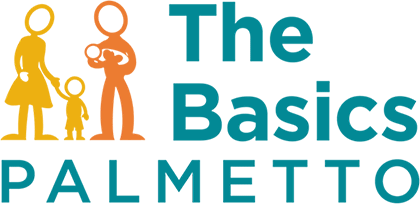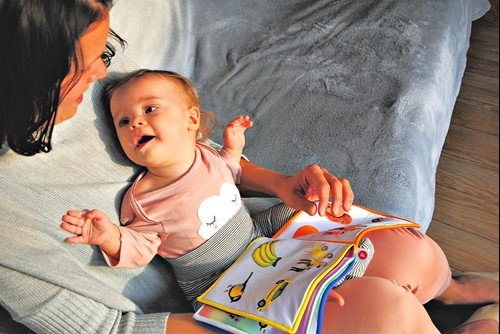Perhaps you already know that it’s never too early to begin reading to your child, that you can begin reading to them from the moment they’re born. Since 80% of a child’s brain development happens during the first three years of life, it’s important that parents and caregivers begin as early as possible!
But this message of reading to babies and very young children may seem impractical. After all, babies can’t yet understand the meaning of words or comprehend a story. Toddlers often can’t sit still from the first page of a book to the last. Young children interrupt, ask lots of questions, and are easily distracted.
Maybe you’ve tried read-aloud time and you don’t think you have the patience for it. We understand. Read-aloud time may feel more like a chore than a cherished moment. That’s why we want to provide real-life tips for real parents with real kids (yes, the ones who squirm and interrupt and are easily distracted.)
If you don’t remember anything else, remember this: Give your child a happy, positive experience with books! Here are 6 ways to make read-aloud time a happy time:
1. Let them experience what a book is.
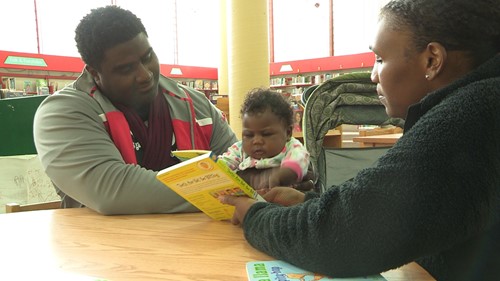
Everything is brand new to a baby! You are the first one who introduces your child to everything about a book. They see that books open and that pages turn. They hear words as you turn the pages. Their eyes learn to focus on pictures. They learn that books are to be held and touched. Books provide valuable sensory experiences for children and you get to be the first one who provides these important experiences.
2. You don’t need to read the words. Point to the pictures and talk about what you see.
This is an especially good way of experiencing books with infants and young toddlers. You don’t need to read the words on the pages. Instead, simply describe what is happening in the pictures. Talk about the colors, shapes, and what the characters are doing. Point to the page when you do this. Your baby simply loves the sound of your voice and taking in the pictures they see. They also love being close to you.
3. You don’t need to finish a book.
When the focus is on reading every word and finishing every page, a young child may become bored and you may become frustrated. You don’t want them to associate books with boredom and frustration.

If you sense that your child is becoming restless, if he wants to skip ahead or move on to another activity, that’s okay! As they get older, they will be able to engage with a book for longer stretches of time. Each child is different. Don’t compare your two-year-old’s attention span to another child the same age. Just a few minutes with a book matters more than you realize.
4. Read the books they love, even if it’s the same books over and over (and over) again.
Children love repetition and it’s actually good for their brain development. Repetition helps with vocabulary, word recognition, pattern, rhythm, word fluency, comprehension, and confidence. Read more about this here: Why Reading the Same Book Repeatedly Is Good for Kids (Even If It Drives You Nuts)
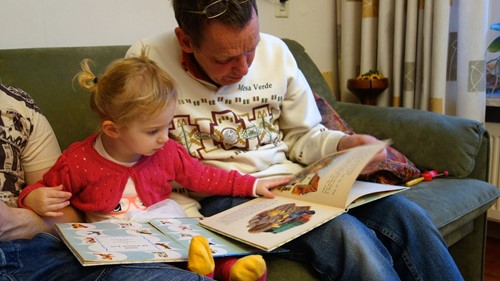
Keep introducing new books here and there, but know that it’s okay if you’ve read Goodnight Moon 387 times. : )
5. Read with expression!
There are so many ways to do this. Let your voice reflect what’s going on in the story. Use a different voice for different characters. Speak in a squeaky voice, a whisper voice, or a loud voice. Young children are full of joy, enthusiasm, and curiosity! They love it when the grown-ups in their lives get on their level have fun.
6. Think of read-aloud moments as a time of to “Maximize Love and Manage Stress.” (Basic #1)
One of the best things about reading to your child is the love they feel during these special moments! Parents, these moments can be special for you too. Pausing for just 5-15 minutes from the stress and distractions of daily life to snuggle and read with a child can be exactly what you need in the midst of a busy or challenging day.
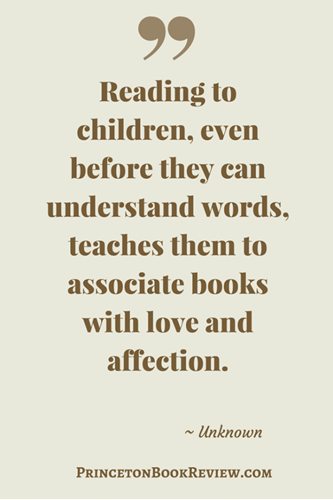
Moms, Dads, and Caregivers—you got this! When your goal is to keep read-aloud time positive for your child and for you, when you remember that it’s just fine to keep it simple and short and snuggly, you’re more likely to make read-aloud time a daily habit.
All of those 5-15 minute reading times sure do add up over the early years! The more we read with young children, the more prepared they become to enjoy reading and to do well in school.
For more ideas, visit the “Read and Discuss Stories” page at www.palmettobasics.org.

The Basics are 5 fun, simple and powerful ways that every parent can give every child a great start in life!
Here are some resources that can help you on your journey:
- Watch this short video for encouraging ways that real parents are doing Basic #5, “Read and Discuss Stories” in everyday life. Click on the tips at the bottom of the page for Infants 0-12 months and Toddlers 12-24 months.
- Receive regular, FREE resources from The Palmetto Basics.
- Follow The Palmetto Basics on Facebook and Twitter. We provide encouraging, real-life, shareable content to help parents and caregivers!
- If you, your faith community, your organization, or your place of business would like to join us as a Champion for Children, contact us! palmettobasics@gmail.com.
Thanks for sharing this post and spreading the word about The Palmetto Basics to those within your circle of influence!
